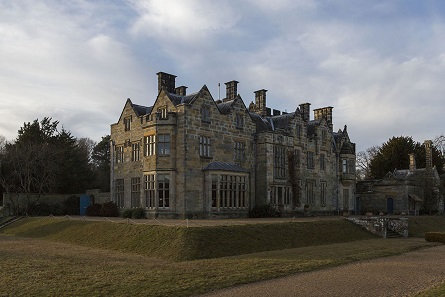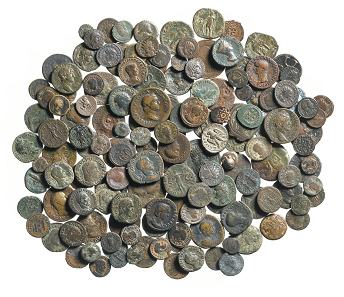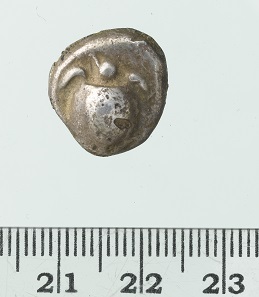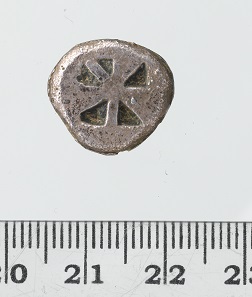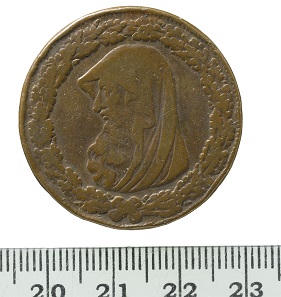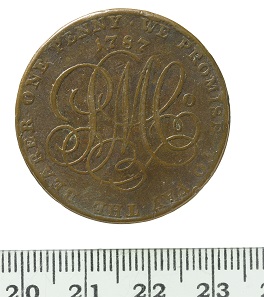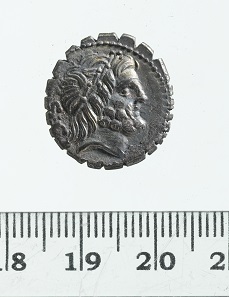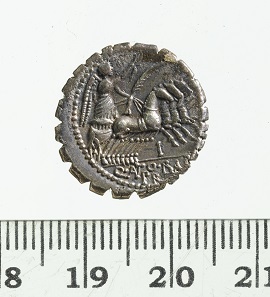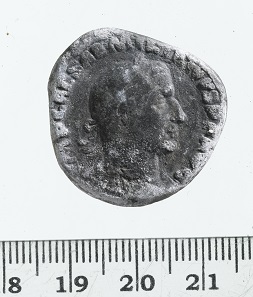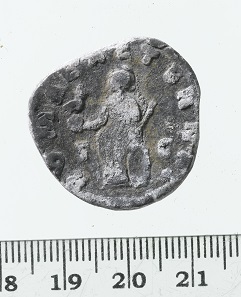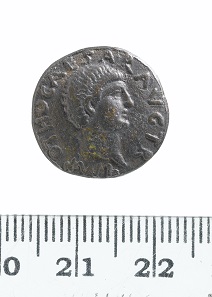by Julian Bowsher, Museum of London
July 5, 2018 – Scotney Castle, near Lamberhurst in Kent, was originally built in the 1370s. It was eventually bought in the 18th century by the Hussey family who built a new castle in the 1830s; remnants of the medieval castle survived as a folly in the newly landscaped grounds. Keen antiquarians and travellers, the Husseys amassed a vast collection of furniture, ceramics, paintings … and coins!
Scotney Castle mansion. © National Trust Images Oskar Proctor.
The National Trust took over the house in 2006 after the death of Elizabeth, widow of Christopher Hussey the well-known architectural historian. The priority was to open the house for visitors to enjoy in a phased programme and the process of systematically searching the building and cataloguing every object began soon after.
The coin collection found at Scotney Castle. Photo: Andy Chopping / MOLA.
Two disintegrating boxes containing coins were found in a cabinet in the downstairs study.
Aegina sea turtle, 600-550 BC. The coin is the only one of Greek origin in the Scotney Castle collection. © MOLA.
These comprise 186 pieces ranging from a 7th century BC quarter stater of the turtle series from Aigina …
Welsh penny token, Parys Mine Company, 1787. This copper-alloy coin is a Welsh penny token, forged in the late eighteenth-century. It features a hooded bust of a Druid l, within a thick oak leaf wreath with one acorn below the tie. The coin is out of place in the collection in terms of origin, being more modern and from the west. © MOLA.
… to a 1787 ‘Druid token’ of the Parys Mine Company – described by Dalton and Hamer as ‘the premier token of the 18th century’.
Antonius Balbus, silver denarius serratus, 83-82 BC. © MOLA.
Between these are Hellenistic Greek, Roman, Byzantine, medieval Islamic coins and a Chinese ‘cash’ of the Qianlong period (1736-95). Collecting ancient coins was a popular pastime for the classically educated for many years and such collections survive in a number of (National Trust) country houses, but this is the largest collection of Roman coins in any NT house.
Edward Hussey III. © National Trust Images.
It appears that Edward Hussey III (1807-94) began the coin collection at the age of 16. His diaries and notebooks record him buying coins and visiting the British Museum. In the 1880s his son, Edward Windsor Hussey, recorded that he ‘went to the British Museum with papa as he wanted to ask about some coins’.
Aemilian 253 AD. © MOLA.
The collection is largely Roman – a common theme was to collect a coin for every Roman emperor and there is a particularly good 3rd-century AD run including Balbinus, Pupienus, Aemilian and the joint Aurelian / Vabalathus of Palmyra.
Roman rarities also include a Moderationi of Tiberius and a Genio Antiocheni of Maximinus Daza. Many 4th-century pieces, however, are contemporary counterfeits as found throughout the empire. The small collection of very worn Byzantine folles runs from Justinian I to Maurice Tiberius.
Scotney Castle, coin collection labels. © MOLA.
Surviving records suggest that there may be further coins to be found: a list compiled by Edward Hussey III noted further Roman coins and some medieval British coins.
This is a 19th century western copy of a denarius of the short lived Roman emperor Otho. Signs of forgery include the coin being cast rather than struck, with edges filed to disguise this leaving an uncharacteristic flat edge. Genuine Otho coins, only minted in gold and silver, are very rare. © MOLA.
A clue to the origins of the collection lies within the coins themselves. We had discounted the idea that they had been found in the vicinity of Scotney, for the Roman coins at least were not of the sort found commonly in Britain. Interestingly, there is a particular bias in the Hellenistic, Roman and Byzantine coins to mints in what is now south-eastern Turkey and northern Syria. The much later Islamic coins appear to be from the same area: the Ayyubid coin was minted in Aleppo, the Artuqid in Mardin and the Mamluk in Damascus. However, more than a few were probably bought in the West; the copy of the Othonian denarius is almost certainly an 18th / 19th century forgery made in the West, bought perhaps due to the rarity of genuine Otho coins!
The National Trust commissioned MOLA (Museum of London Archaeology) to identify and catalogue the collection. MOLA is grateful to Nathalie Cohen, Emma Long, Claire Reed and Chloe Tapping of the NT for their support. We are also grateful to colleagues who identified some of the more obscure pieces – Roger Bland and Curtis Clay, and British Museum staff Richard Abdy, Vesta Curtis, Amelia Dowler and Helen Wang. The coins were conserved by Elizabeth Barham and photographed by Andy Chopping and Maggie Cox (all of MOLA).
This text was first published in the Money and Medals Newsletter 73 of April/May 2018.
If you are interested in subscribing for free to the Money and Medals Newsletter please email with the subject ‘subscribe’.
Want to visit Scotney Castle? This video shows the castle’s most beautiful aspects.
You can learn more about hoards in Great Britain in our article here.




